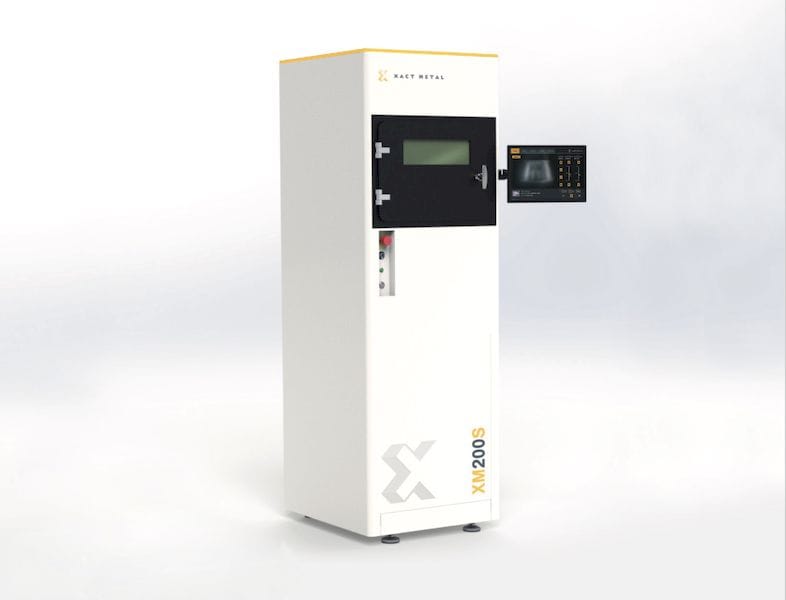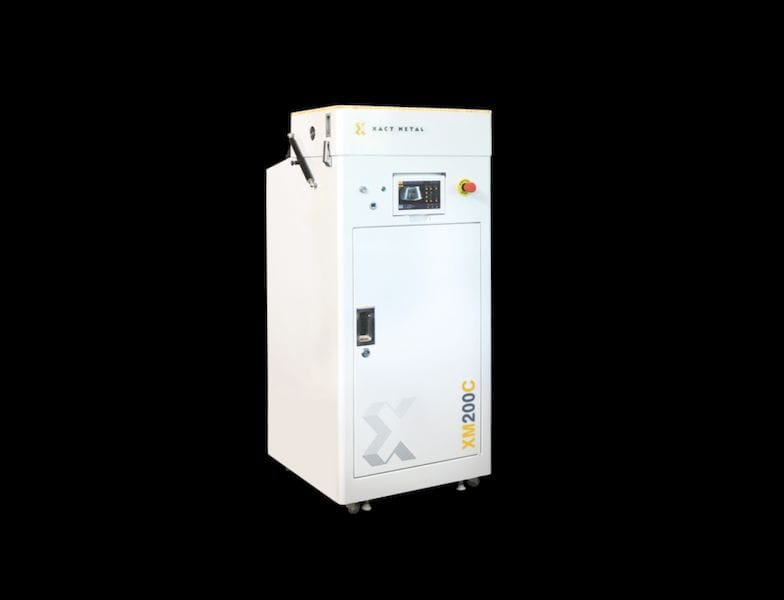
Xact Metal, the Pennsylvania-based 3D metal printing startup, has introduced two news model, both of which are more affordable.
This is quite an interesting development. When the company first showed their equipment last year, the key idea was that they offered a platform capable of 3D printing metal objects at a cost far lower than from the traditional powder bed fusion suppliers, whose equipment is often targeted at big-time operations in the aerospace or automotive areas.
The two new products are the XM200C and XM200S, both based on their original prototype.
The XM200S product, priced at about USD$130,000 includes a build volume of 127 x 127 x 127mm, somewhat smaller than from the more expensive vendors, but still very useful for most operators.
One of the key features of their prototype we saw in 2017 was that it did not use a galvonmeter approach to deliver laser power to the flat bed of metal powder. Most larger-scale 3D metal printers use a mirror to redirect the laser energy towards the powder, leaving the heavy laser immobile and only the mirror tilting as required. But that introduces problems, as we described here.
The prototype used a different approach where the laser energy was always delivered directly to the powder perpendicularly, yielding a higher quality print.
Curiously, the XM200S product uses “Digital galvanometer mirrors”, so it appears the direct energy deliver approach is no longer a feature.
The lure of lower cost products always attracts more customers, as I’m sure Xact Metal has experienced with their previous products.

As such they’ve also introduced a new model, the XM200C, which seems to be loosely based on the XM200S model. While the build volume remains the same as the XM200S, the price is substantially lower, at only USD$80,000.
What changed?
One particular aspect seems to form the major difference between the “C” and the “S” model.
The less expensive XM200C model uses a 100W Yb fiber laser, whereas the XM200S includes a 200W Yb fiber laser. This means that prints could take around twice as long to execute, as there is half the power to melt the powder.
That may seem to be a disadvantage, because the “price per print time” would obviously be better on the more expensive unit. However, that equation only holds when you are 3D printing more or less continuously, which many companies do not.
For those companies intermittently using equipment where print time is less of a concern, the XM200C may be a very good fit. Saving USD$50,000 on the price would be welcomed elsewhere in any company, or could even be used to purchase many kgs of metal powder for operations.
The good news here is that Xact Metal is providing choice to their clients, likely as a result of feedback received during sales and operation.
Via Xact Metal

